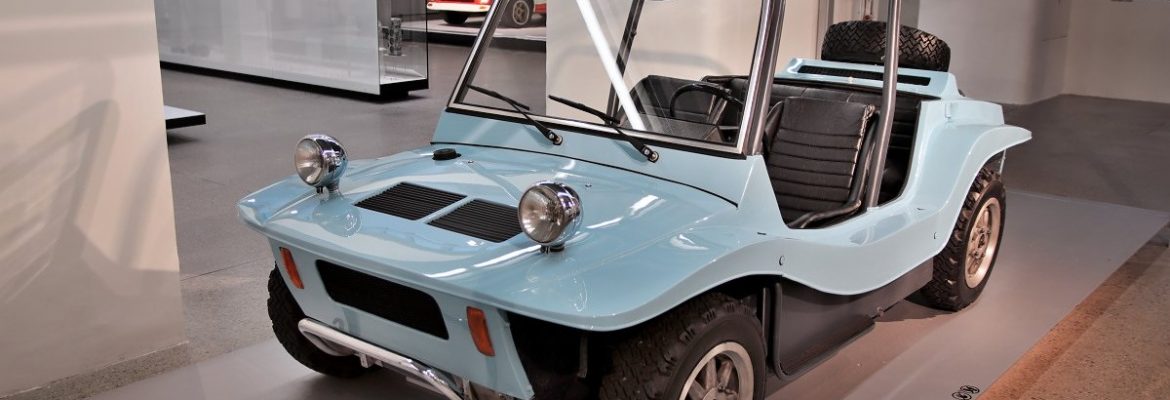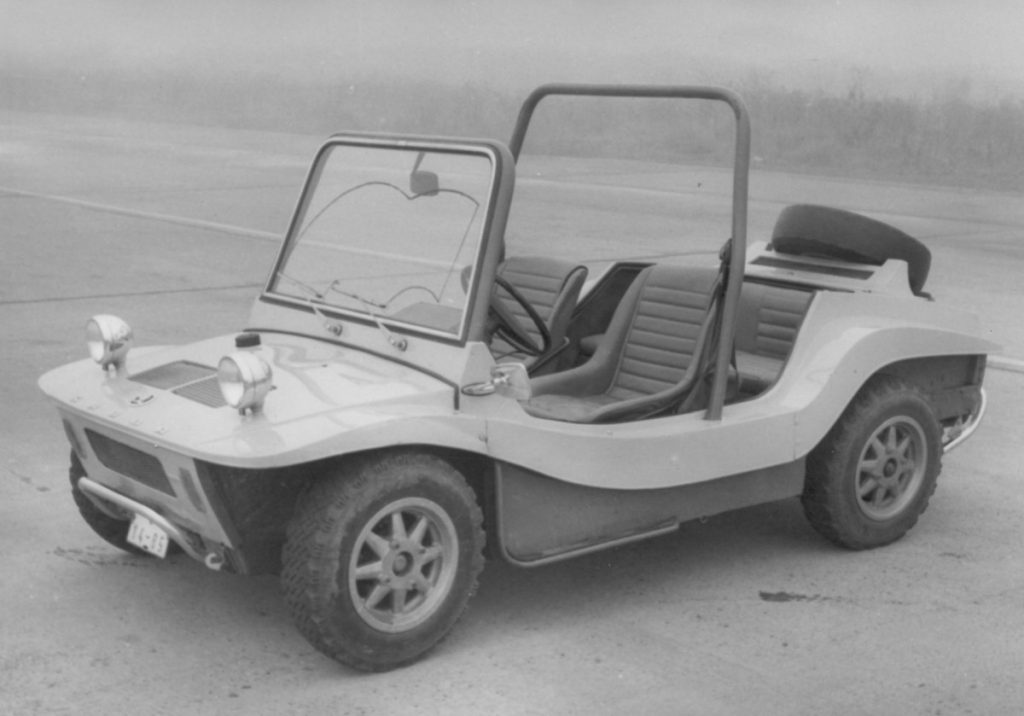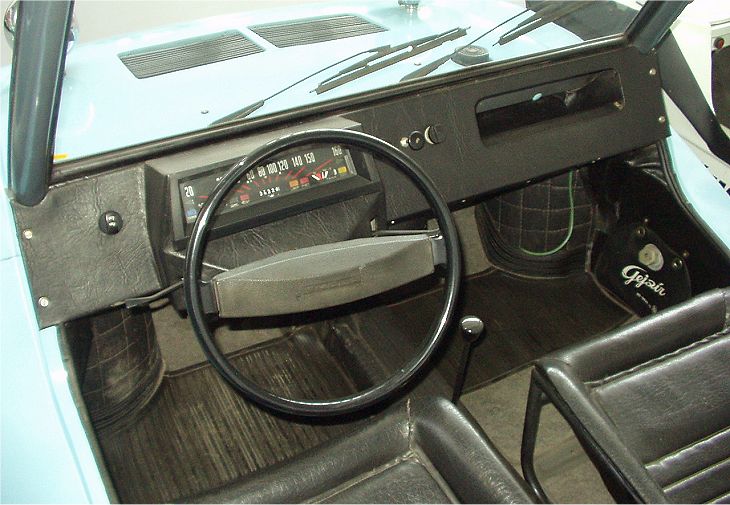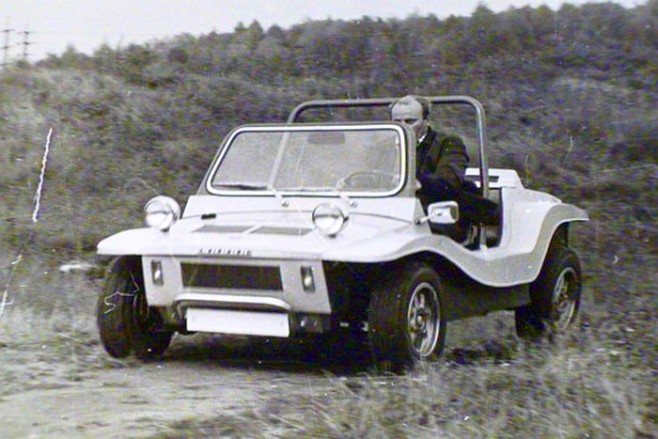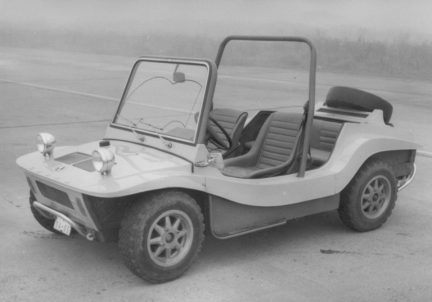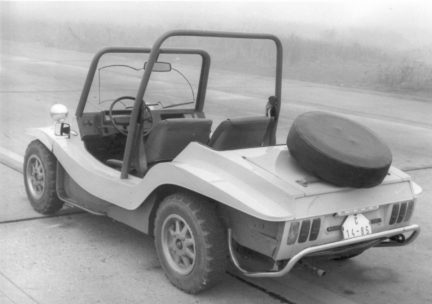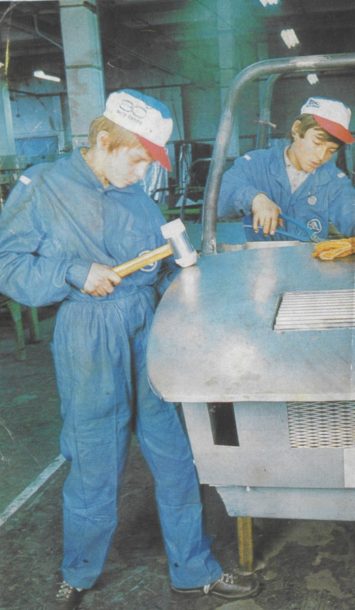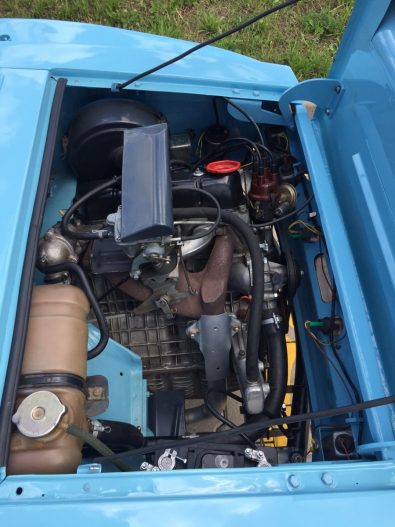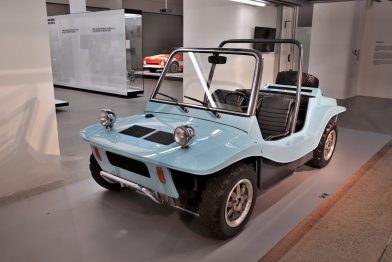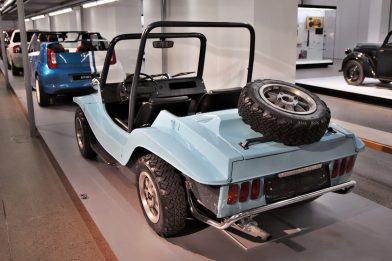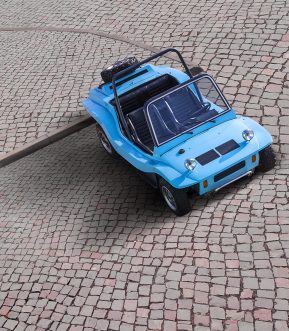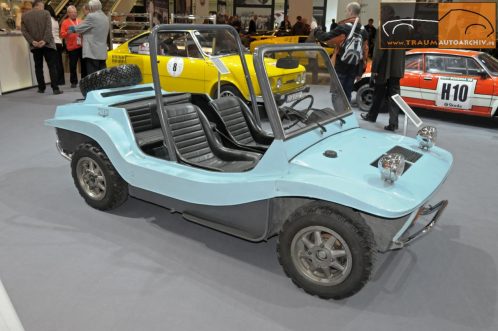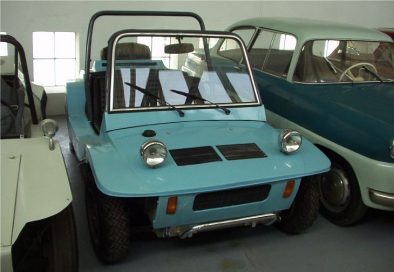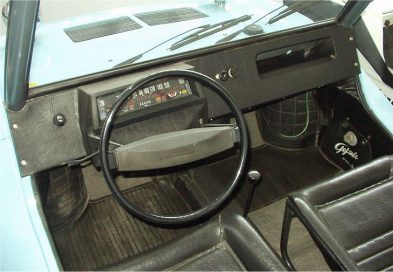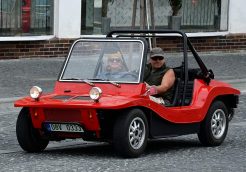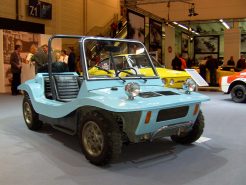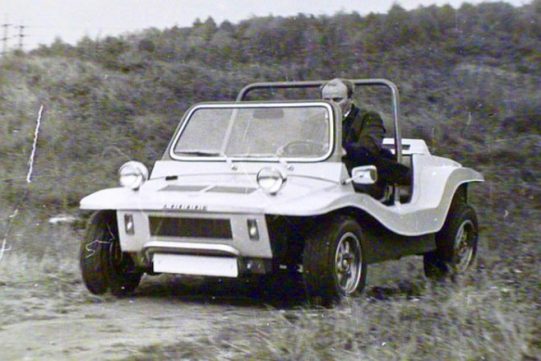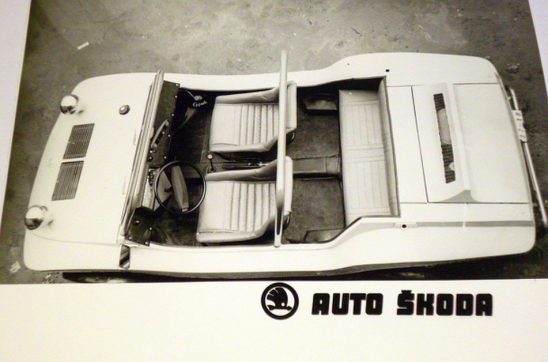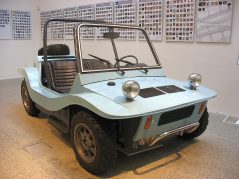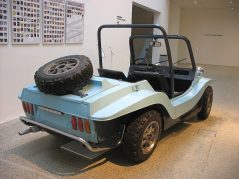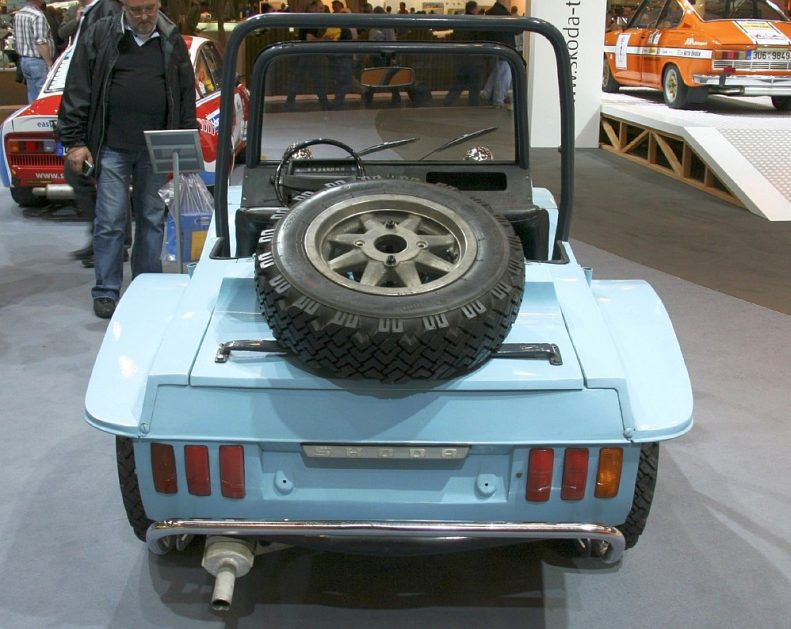Skoda Buggy type 736
In 125 years of existence, Skoda has created not only cars for motorsport but also cars for fun and joy. This was the case with the Buggy type 736 based on the Skoda 110 sedan, a model that followed the brand’s victories in autocross in the early 1970s. This buggy with its 1100 cm3 engine of 45hp was very agile in all terrain. The last of the five prototypes was produced in 1975. This dynamic buggy is now part of the Skoda Muzeum collections.
At the end of the 1960s, a new motor sport — autocross — began to gain ground in Central Europe. In Czechoslovakia, the first official race took place in the fall of 1969 in Prerov and in November 1970 Milan Zid, driver of the official Skoda team, won in the 1,000 cm3 category at the event organized at the racecourse in Velka Pardubicka.
Its extremely lightweight Skoda 1100 MB sedan has no bumpers or rear doors, and the interior has been significantly stripped down. Skoda also won the first national autocross championship in 1971, this time with a new buggy based on the Skoda 100/110 L whose chassis consisted of a shortened 400 mm floor and the minimalist bodywork was completed by tubular roll bars. Milan Zid wins the class up to 1,000cc and the top class is dominated by Oldrich Brunclik with a bored engine to 1,150cc.
However, the skills of the Skoda competition department were monopolized by the preparation of rally and circuit cars and, despite the successes achieved, the factory team said goodbye to autocross during the 1972 season.
The growing popularity of autocross has intertwined with the recreational car boom. The phenomenon of “dune buggies” or “beach buggies”, synonymous with romantic walks and adrenaline rushes in the sand dunes, has arrived in Europe from the United States. Most of these were straightforward kits based on lower class production cars (most often Volkswagen Beetles) with fiberglass bodywork. At that time, Skodas offered modern technology at a very reasonable price, so that they did not stay away from the companies producing buggies in Western Europe.
François Vernimmen from Namur, Belgium, was one of the most active European buggy builders at the time. In 1971, he had created two VF Buggies on a reinforced Skoda 100 platform, with a wheelbase shortened from 2400 to 2240 mm. The 42-horsepower 988cc four-cylinder and four-speed gearbox were located at the rear.
The VF Buggy, presented at the Brussels Motor Show in January 1972 on the Skoda stand, had an open body with a canvas roof, a sports steering wheel and bucket seats. In three years, around thirty of these buggies equipped with 988 cm3 and 1107 cm3 engines, called VF Okapi since 1973, were made.
In the meantime, the initiative is taken over by the Skoda development center. The brand wants to ascertain whether a project of this type would have relatively attractive potential for export and therefore would make commercial sense. The Skoda Buggy type 736 project was launched in 1973, the most intensive phase of the work dates back to 1974 – 1975 and the tests were completed in the summer of 1976.
The wheelbase of the Skoda 110 L sedan had been shortened to 2,000 mm. The windshield surround and roll bar could be seen protruding well over the heads of the driver and passenger. The all-metal body with 2+2 layout of the prototype was designed by Josef Cech. The painting and assembly of the first Skoda Buggy type 736 was carried out by the development department of the car manufacturer, the other four examples were carried out by apprentices from the brand’s vocational training center with a high proportion of manual labor. The last buggy was built in October 1975.
The Skoda Buggy type 736 differed from the Belgian models by its more sophisticated design. The location of the radiator, battery and 40-liter fuel tank in the front allowed for better weight distribution on the axles. Attention was drawn to the pair of headlights protruding above the hood line or the spare wheel in a textile cover located on the rear hood. The front and rear of this buggy were protected by massive tubular hoops. The engine was a 1.107 cc four-cylinder Skoda 110, rated at 45 hp at 5,000 rpm and 74 Nm at 3,000 rpm.
It measured only 3.320 mm and weighed empty only 710 kg. The payload of 400 kg corresponded to the weight of four adults plus 100 kg. But there was no luggage compartment. As a couple, it was possible to put small items on the 980 mm wide rear seat. Passengers were protected from bad weather by a textile roof and sidewalls with transparent windows. During testing, with Barum 165 SR 13 or 175 SR 13, the half-loaded prototype reached a speed of 107 km/h for an average fuel consumption of 8.3 liters per 100 km.
The Skoda Buggy Type 736 completed almost 30,000 km of demanding tests and on most points the rating was positive. But that was not enough to push this marginal car towards mass production, even though the design office tried to come up with alternative solutions to simplify and reduce production costs. These included, in particular, the use of fiberglass bodywork and it was also proposed to deliver this type of car to the police and border guards. However, the legislation in force at the time precluded this proposal.
Subsequently, one of the prototypes of Mlada Boleslav’s buggy was used at Prague Ruzyne Airport as a “Follow me” car. Another copy can be found at the Skoda Muzeum and it underwent a careful restoration in 2017 by the students of the company’s vocational training center, whose predecessors had participated in the production of this unusual car in the 1970s!
